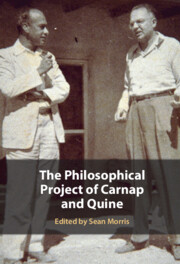Book contents
- The Philosophical Project of Carnap and Quine
- The Philosophical Project of Carnap and Quine
- Copyright page
- Dedication
- Contents
- Contributors
- Acknowledgments
- Introduction
- Part I Carnap, Quine, and Logical Empiricism
- Part II Carnap, Quine, and American Pragmatism
- Part III Carnap and Quine on Logic, Language, and Translation
- Part IV Carnap and Quine on Ontology and Metaphysics
- Bibliography
- Index
- References
Bibliography
Published online by Cambridge University Press: 18 February 2023
- The Philosophical Project of Carnap and Quine
- The Philosophical Project of Carnap and Quine
- Copyright page
- Dedication
- Contents
- Contributors
- Acknowledgments
- Introduction
- Part I Carnap, Quine, and Logical Empiricism
- Part II Carnap, Quine, and American Pragmatism
- Part III Carnap and Quine on Logic, Language, and Translation
- Part IV Carnap and Quine on Ontology and Metaphysics
- Bibliography
- Index
- References
Summary

- Type
- Chapter
- Information
- The Philosophical Project of Carnap and Quine , pp. 272 - 288Publisher: Cambridge University PressPrint publication year: 2023

